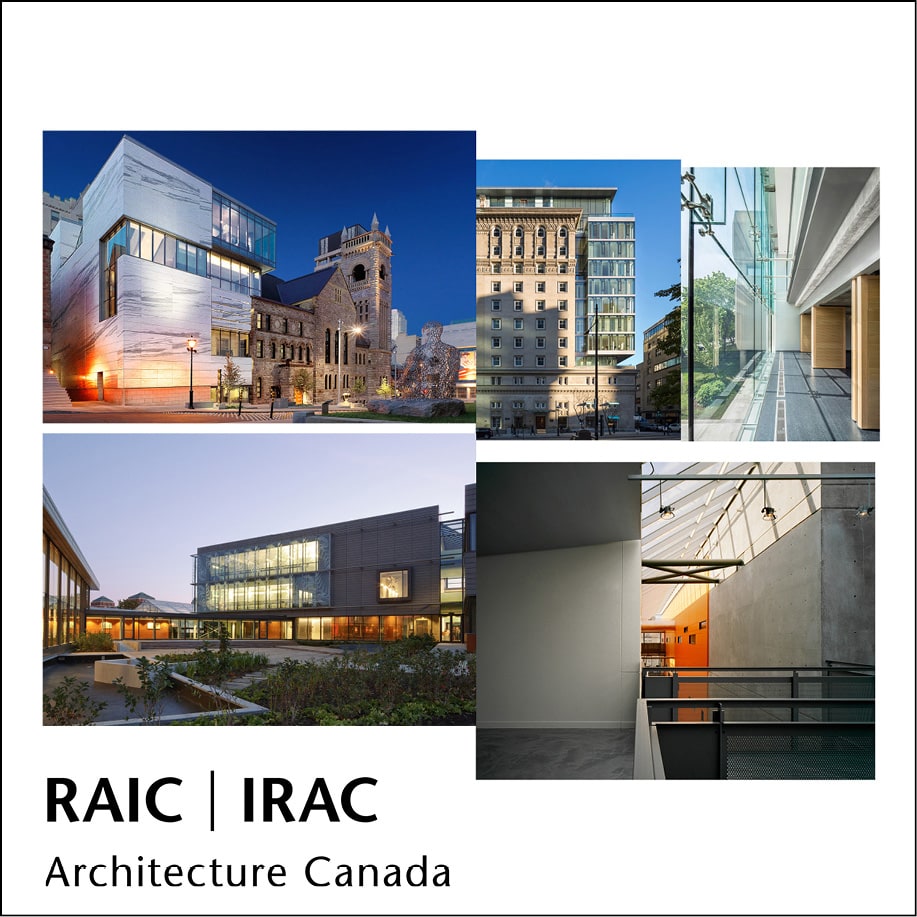PROVENCHER_ROY recipient for the RAIC – 2015 Architectural Firm Award

OTTAWA, February 18, 2015 – Provencher_Roy, a Montreal firm noted for a number of major projects which include airports, hotels, and university buildings, will receive the 2015 Architectural Firm Award of the Royal Architectural Institute of Canada (RAIC).
“Provencher_Roy was chosen for the breadth and consistently high quality of work over many years,” said the five-member jury. “They have worked with a broad range of clients and project types. The firm is recognized for its collaborative work and the excellence of its working and peer-learning environment.”
“Provencher_Roy has played an important mentoring role that has helped establish the next generation of architects,” the jury added. “In addition, they have maintained an important and continuing involvement in advocacy, education, and community. They engage with the public and promote the profession in the community at large.”
Established in 1983 by architects Claude Provencher, FIRAC, and Michel Roy, FIRAC, the office consists of more than 150 professionals. It is a multidisciplinary firm offering architectural and industrial design services, as well as urban design and planning, interior design, and sustainable development.
Projects include the renovation of the Ritz-Carlton Hotel in Montreal (2013); Claire and Marc Bourgie Quebec and Canadian Art Pavilion at the Montreal Museum of Fine Arts (2011); University of Montreal Biodiversity Centre (2010) and Jean Lesage International Airport in Quebec City (2008).
Provencher_Roy also collaborated with the Danish architect Poul Ove Jensen in the design of the future Champlain Bridge in Montreal.
The firm’s international projects include the Embassy of Canada in Morocco; the Diamond Peninsula Hotel in Dongguan, China; the Karachi Race Course Gardens in Pakistan; and MediCity in Gurgaon, India.
Provencher_Roy has won more than 70 architectural prizes and awards. Members of the firm teach, give lectures, train interns and participate in public forums. Founding partner Claude Provencher has served as a member and vice chair of the National Capital Commission’s Advisory Committee on Planning, Design, and Realty. He sits on the advisory board of the Cultural Property Commission of Quebec.
“This recognition is absolutely wonderful for the members of our team who, through their day-to-day dedication, passion and creativity, help build environments and sensitive and meaningful architecture that reflects our vision and commitment to the history and future of our cities,” said Claude Provencher.
First awarded in 2003, the RAIC Architectural Firm Award recognizes the achievements of a firm for its quality of architecture, service to clients and innovations in practice. It also takes into account contribution to architectural education and professional organizations, as well as public recognition.
“The award is intended to honour the many kinds of leadership in our profession,” said RAIC President Sam Oboh.
“Recipients of the award demonstrate leadership by establishing progressive workplaces for their employees,” he said. “They create a highly collaborative client-architect relationship, and skillfully guide their client’s vision even after the project is complete and occupied.”
The award will be presented at the RAIC Festival of Architecture which takes place in Calgary June 3 to 6, in collaboration with the Alberta Association of Architects.
The jury was made up of:
- Peter Busby, FRAIC, Past Gold Medalist, San-Francisco-based architect
- Paule Boutin, AP/FIRAC, Past President of the RAIC and Montreal architect
- Tyler Sharp, MRAIC, Past Recipient of the RAIC Young Architect Award and Toronto architect
- Siamak Hariri, FRAIC, Toronto architect
- Martin Houle, MIRAC, founder of Kollectif.net and Montreal architect
ABOUT THE RAIC
The Royal Architectural Institute of Canada is a voluntary national association, representing 4,800 members. The RAIC advocates for excellence in the built environment, works to demonstrate how design enhances the quality of life and promotes responsible architecture in addressing important issues of society.